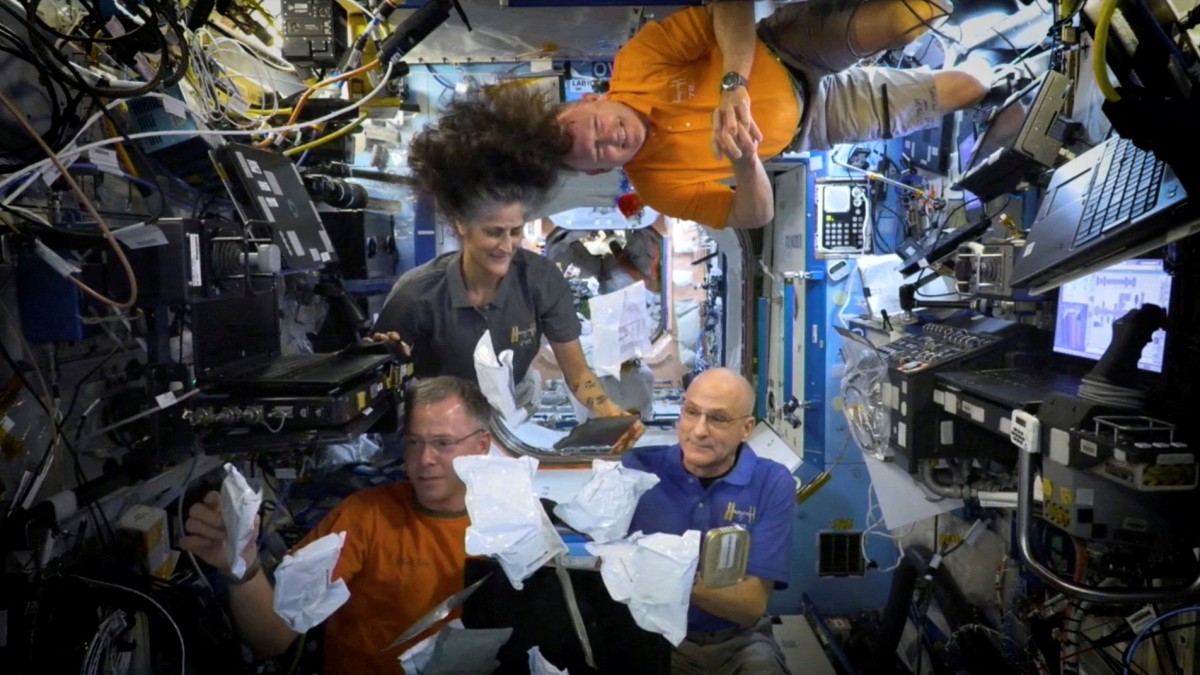Nasa astronauts Sunita Williams and Butch Wilmore, after spending months in space, are expected to return to Earth on March 19.
The two astronauts might, however, find it difficult to become used to Earth’s gravity once they return.
In fact, as Williams and Wilmore’s bodies readapted to life on the planet, the gravitational pull may seem like a harsh consequence.
Here’s why.
‘Tough gravity’
Williams and Wilmore’s time on the International Space Station (ISS) was unexpectedly extended due to thruster issues that delayed their return from their 10-day mission aboard Boeing’s Starliner.
The astronauts have already been in microgravity for over eight months.
Now, in addition to providing respite, the homecoming will signal the start of their arduous struggle against Earth’s gravity.
It is difficult to return to gravity on Earth after a long time of floating.
Wilmore has admitted that even the most basic actions, like “lifting a pencil will feel like a workout.”
He told CNN, “Gravity is really tough, and that’s what we feel when we get back. It starts pulling everything to lower extremities; fluids will be pulled down, and even lifting a pencil will feel like a workout.”
Williams expressed similar concerns, stating that it will be difficult to get used to life on the planet, particularly after months of weightless floating.
“It’s gonna be a little bit hard to adapt,” she said. “It’s a day-for-day process when you get your fast-twitch muscle action back.
The abrupt change may cause an overwhelming feeling of discomfort and heaviness.
The astronauts, however, remain hopeful about their return despite the challenges.
“Floating in space is a lot of fun; I like my crazy hair,” Wilmore has said.
Also read: How Elon Musk will help bring Sunita Williams back from space
Long-term consequences of extended space travel
Extended space travel may have long-term effects, as the European Space Agency (ESA) has previously warned.
According to a recent study, prolonged periods of inactivity in microgravity can cause cellular clustering and degeneration of cartilage, two early signs of arthritis.
As the astronauts attempt to regain their physical strength, this could make the return much more difficult.
Long-term space flight also significantly changes human physiology.
Body fluids gravitate towards the upper body in microgravity, which frequently results in “puffy face syndrome.”
These fluids, however, redistribute lower after astronauts return to Earth, causing leg swelling and a heaviness-like feeling.
Bone density loss and muscular atrophy additionally pose serious problems.
According to studies, astronauts may lose as much as one to two per cent of their bone mass per month while in space.
When muscles are not used to carry body weight, they weaken as well, which makes reentry challenging.
Adjustments to the heart further exacerbate the situation.
The heart must suddenly work harder in the gravity of the Earth after adjusting to less effort in microgravity, which sometimes causes exhaustion and dizziness.
Additionally, temporary disorientation and trouble walking can result from abnormalities in the vestibular system, which is the area of the inner ear that regulates balance.
Also read: 60 days and counting: Why Sunita Williams might not return to Earth until next year
Regaining strength
A rigorous rehabilitation programme has been developed by Nasa to assist Williams and Wilmore in regaining their strength and mobility.
To restore muscle strength, they will need to undergo rigorous physical therapy during their recovery, which will include resistance training and balance exercises.
Furthermore, cardiovascular conditioning will be essential, with astronauts regaining heart function through exercises on a treadmill and cycle.
While neurological therapy will help them restore balance and coordination, diets high in calcium and vitamin D will aid in bone healing.
Researchers from Johns Hopkins University published a study in the journal npj Microgravity suggesting jumping exercises could help mitigate cartilage damage.
The mice’s cartilage was thicker, healthier, and had normal cellular structure after three weeks of jump training, according to the study.
Also read: Why Sunita Williams' mission onboard the Boeing Starliner is significant
A ride home
Wilmore and Williams are set to board SpaceX’s Dragon spacecraft and undock for the ride home on March 19.
The two have also denied allegations by President Donald Trump and Department of Government Efficiency Chief Elon Musk that the former Joe Biden administration had “virtually abandoned” them in space.
Wilmore told CNN in a Thursday interview, “We don’t feel abandoned. We don’t feel stuck. We don’t feel stranded. I understand why others may think that.”
“We come prepared. We come committed. That is what your human spaceflight programme is. It prepares for any and all contingencies that we can conceive of, and we prepare for those,” he added.
In June 2024, Williams and Wilmore had taken off on Boeing’s Starliner spacecraft. Their estimated duration in space was eight days.
However, after Starliner developed certain errors, Nasa brought back the Boeing spacecraft without its two crew members in September 2024.
Nasa later confirmed that Williams and Wilmore, along with Nick Hague and Aleksandr Grubonov, would return with the Nasa-Space Crew 9 mission, which was launched in late September.
The space agency has now stated that the two astronauts will not return to Earth until the Nasa-SpaceX Crew 10 mission, which will replace Crew 9, is launched to the ISS.
As part of its Commercial Crew Programme, the space agency transports crew members to and from the ISS using SpaceX spacecraft.
The Crew 10 mission was supposed to lift off in February 2025, but it was postponed until late March 2025. This has, in turn, delayed the Crew-9 mission, of which Williams and Wilmore are a member.
The exact return date of the two has not yet been disclosed by the space agency.
With inputs from agencies


)

)
)
)
)
)
)
)
)



